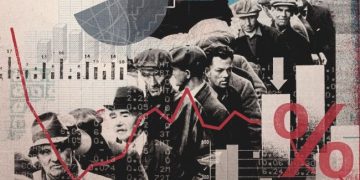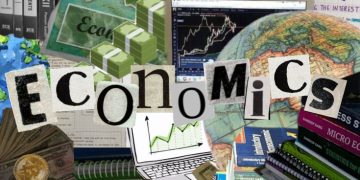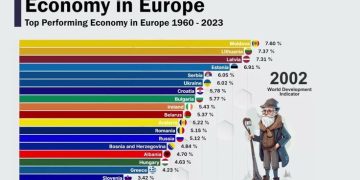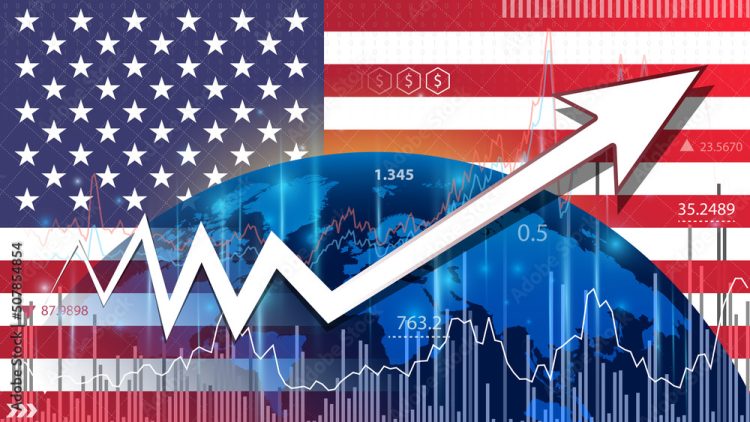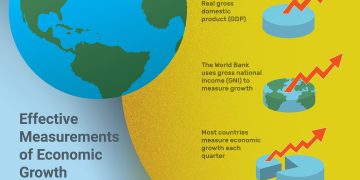Analysis of Current U.S. Inflation Trends and Economic Recovery
The United States is currently navigating a complex economic landscape marked by rising inflation, persistent supply chain challenges, and a recovery that continues to show signs of unevenness across various sectors. The inflation rate in the U.S. has reached levels not seen in decades, and the Federal Reserve has taken aggressive measures to curb the inflationary pressures by raising interest rates. But with inflation continuing to rise and its effects being felt across households and businesses, many are asking: Is the U.S. economy poised for a soft landing, or is a harder economic downturn inevitable?
The Roots of Current Inflation in the U.S.
To understand the U.S. economy’s potential trajectory, it’s essential to first take a step back and analyze the key drivers behind the current inflation trends. Inflation is a broad increase in the price of goods and services, and the current inflationary period has been triggered by a combination of demand-pull and cost-push factors.
Demand-Pull Factors: Economic Reopening and Stimulus Measures
The COVID-19 pandemic had a profound impact on global economies, and the U.S. was no exception. The widespread economic shutdowns during the peak of the pandemic led to a sharp contraction in economic activity. However, once vaccines became widely available and the economy began to reopen, there was a rapid rebound in consumer spending. This surge in demand for goods and services has contributed to demand-pull inflation, where demand outstrips supply, pushing prices higher.
The U.S. government also provided substantial fiscal stimulus packages, which injected trillions of dollars into the economy in the form of direct payments, unemployment benefits, and aid to businesses. While these measures were designed to help citizens and businesses during an unprecedented health crisis, they also stimulated demand, further contributing to inflationary pressures.
Cost-Push Factors: Supply Chain Disruptions and Rising Commodities
On the supply side, the pandemic caused significant disruptions to global supply chains. Labor shortages, production delays, and shipping bottlenecks have all contributed to rising costs in a wide range of industries. These disruptions have led to shortages of critical goods, from semiconductors to food products, which has driven prices higher. At the same time, rising commodity prices, including energy costs (such as oil and natural gas), have increased production costs, which are typically passed on to consumers.
Additionally, the war in Ukraine has exacerbated inflation by disrupting the supply of key commodities, particularly energy and agricultural products. With global oil prices rising sharply, consumers are feeling the pinch at the gas pump, while businesses are grappling with increased transportation and production costs.
In summary, U.S. inflation is driven by a combination of increased consumer demand, supply chain disruptions, and rising commodity prices, all compounded by a series of external shocks like the pandemic and geopolitical tensions.
Opinions from Economists on Whether a Soft Landing Is Achievable
As inflation continues to climb, the question on the minds of many economists, policymakers, and businesses is whether the U.S. economy can achieve a “soft landing”—a scenario where the economy slows down without entering a deep recession. A soft landing is characterized by a controlled slowdown, where inflation moderates and economic growth continues at a stable pace without significant job losses or a contraction in economic output.
The Federal Reserve’s challenge is to navigate a fine line between raising interest rates enough to cool inflation but not so much that it triggers a recession. The ultimate goal is to bring inflation back to the Fed’s target rate of around 2%, while also maintaining employment and avoiding a sharp economic downturn.
The Optimistic View: A Soft Landing Is Still Possible
Some economists remain optimistic that a soft landing is still achievable, despite the current inflationary pressures. They argue that the U.S. economy is resilient, and with the right mix of monetary and fiscal policies, inflation can be tamed without a drastic economic contraction.
According to this view, the strength of the labor market, the ongoing economic recovery, and the flexibility of the U.S. economy make a soft landing feasible. Unemployment rates in the U.S. remain historically low, and consumer spending remains robust, which supports the argument that the economy is not on the brink of a major slowdown. Additionally, technological advancements and strong business fundamentals could help companies adapt to inflationary pressures and keep the economy on track.
Furthermore, many economists believe that inflation will eventually moderate as supply chain disruptions ease and the global economy stabilizes. With fewer bottlenecks in production and distribution, supply-side inflationary pressures could subside, which would help ease overall price increases.

The Pessimistic View: A Harder Landing May Be Inevitable
On the other hand, some economists are less optimistic about the possibility of a soft landing. They argue that inflation has already reached levels that are difficult to reverse without causing significant economic pain. The rapid pace of interest rate hikes by the Federal Reserve may have a delayed effect, and a sharp increase in borrowing costs could lead to a slowdown in consumer spending and business investment.
For example, when the Fed raises interest rates, it makes borrowing more expensive for both consumers and businesses. This can lead to reduced spending, slower economic growth, and, in some cases, layoffs as businesses adjust to the higher cost of capital. While this may help reduce inflation in the long term, the short-term economic slowdown could lead to a recession.
Additionally, structural factors such as rising energy prices, supply chain inefficiencies, and global political instability may prolong inflationary pressures, making it more difficult for the economy to regain stability. In this view, the U.S. could face a period of stagflation, where inflation remains high, but economic growth stagnates, resulting in a difficult economic environment.
How Inflation Is Affecting Consumers and Businesses
The impact of inflation is being felt across every corner of the U.S. economy. Consumers are experiencing higher prices for essential goods and services, including food, housing, transportation, and healthcare. According to recent data, grocery prices have surged, with food inflation reaching double-digit levels. The cost of housing, particularly rents, has also increased, putting pressure on household budgets.
As consumers face rising costs, they may adjust their spending habits. Some may cut back on discretionary purchases, opting for cheaper alternatives or delaying big-ticket items like cars and appliances. Others may shift their focus to essential goods, which could lead to shifts in demand patterns across industries.
For businesses, inflation presents both challenges and opportunities. On the one hand, higher input costs, such as rising labor expenses and raw material prices, are squeezing profit margins. Companies may pass these costs onto consumers, but there is a limit to how much price increases can be absorbed before demand starts to decline.
On the other hand, businesses in certain sectors may benefit from inflation. For example, companies in the energy, real estate, and commodities industries often see higher profits during periods of rising prices. However, companies that rely on global supply chains or operate in labor-intensive industries may find it harder to cope with rising costs, leading to layoffs or slower growth.
Predictions for the U.S. Economy’s Trajectory in the Coming Year
As the U.S. economy enters 2023, the outlook remains uncertain. While some indicators point to a continued recovery, rising inflation and tighter monetary policies create significant headwinds







